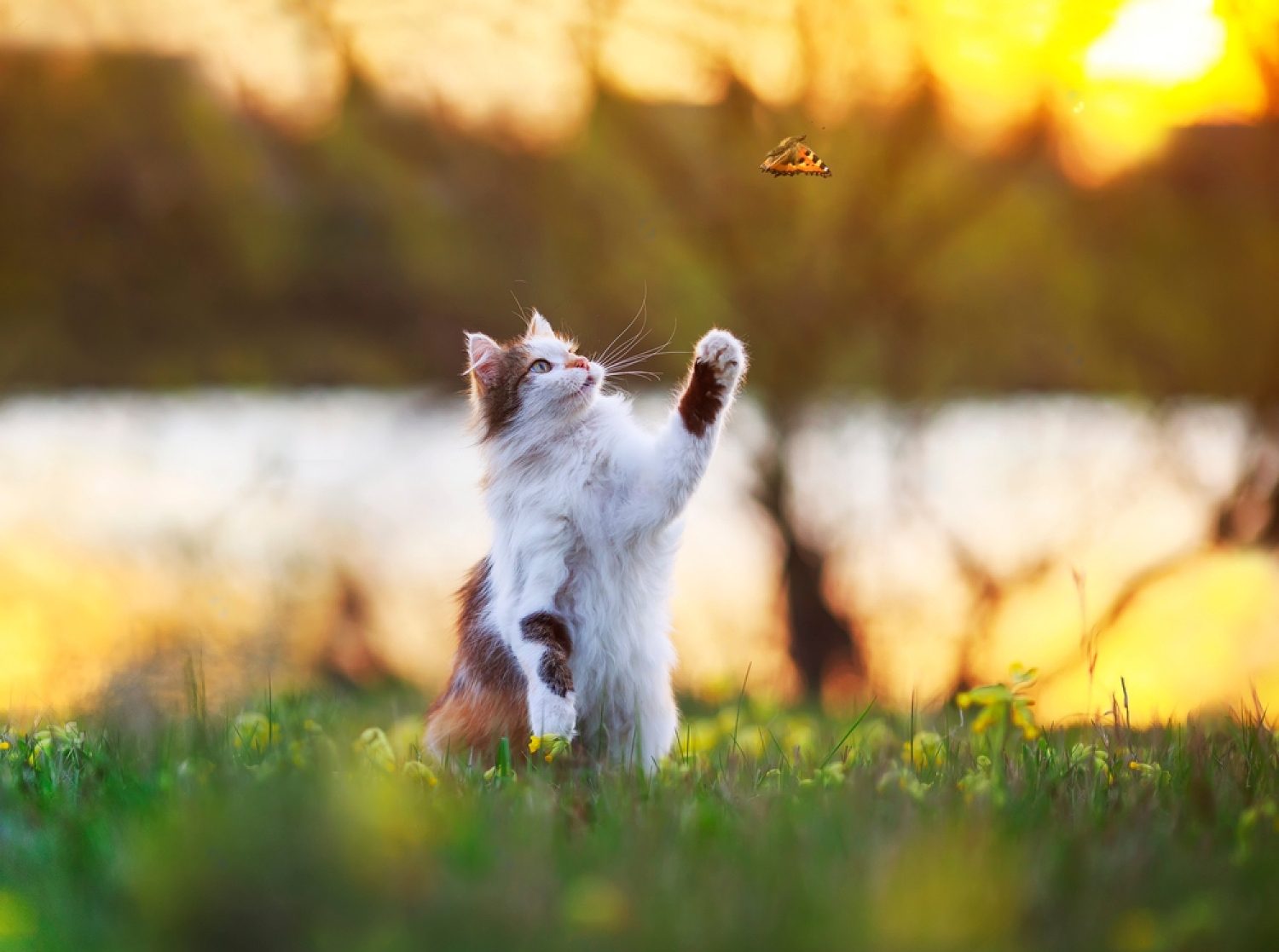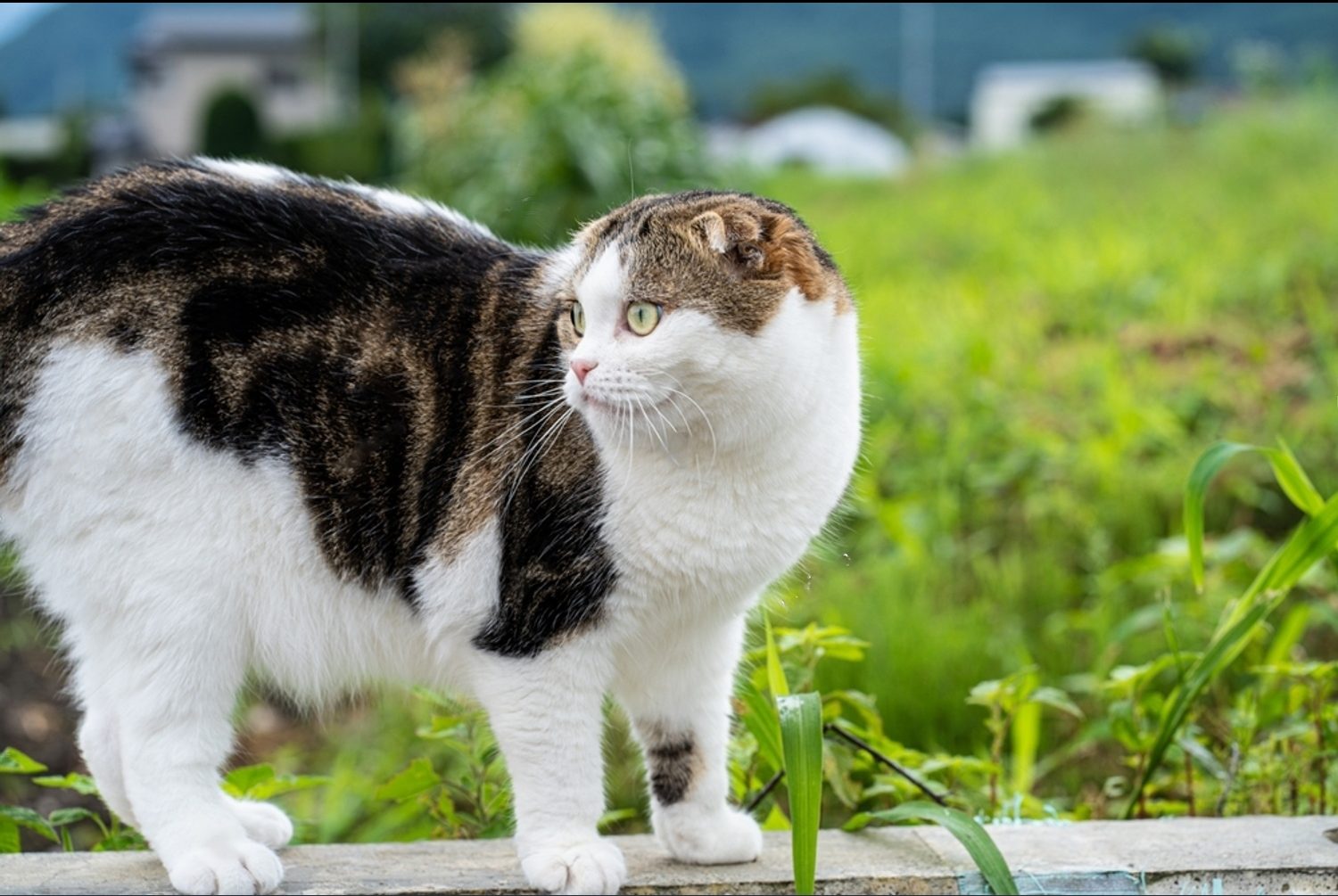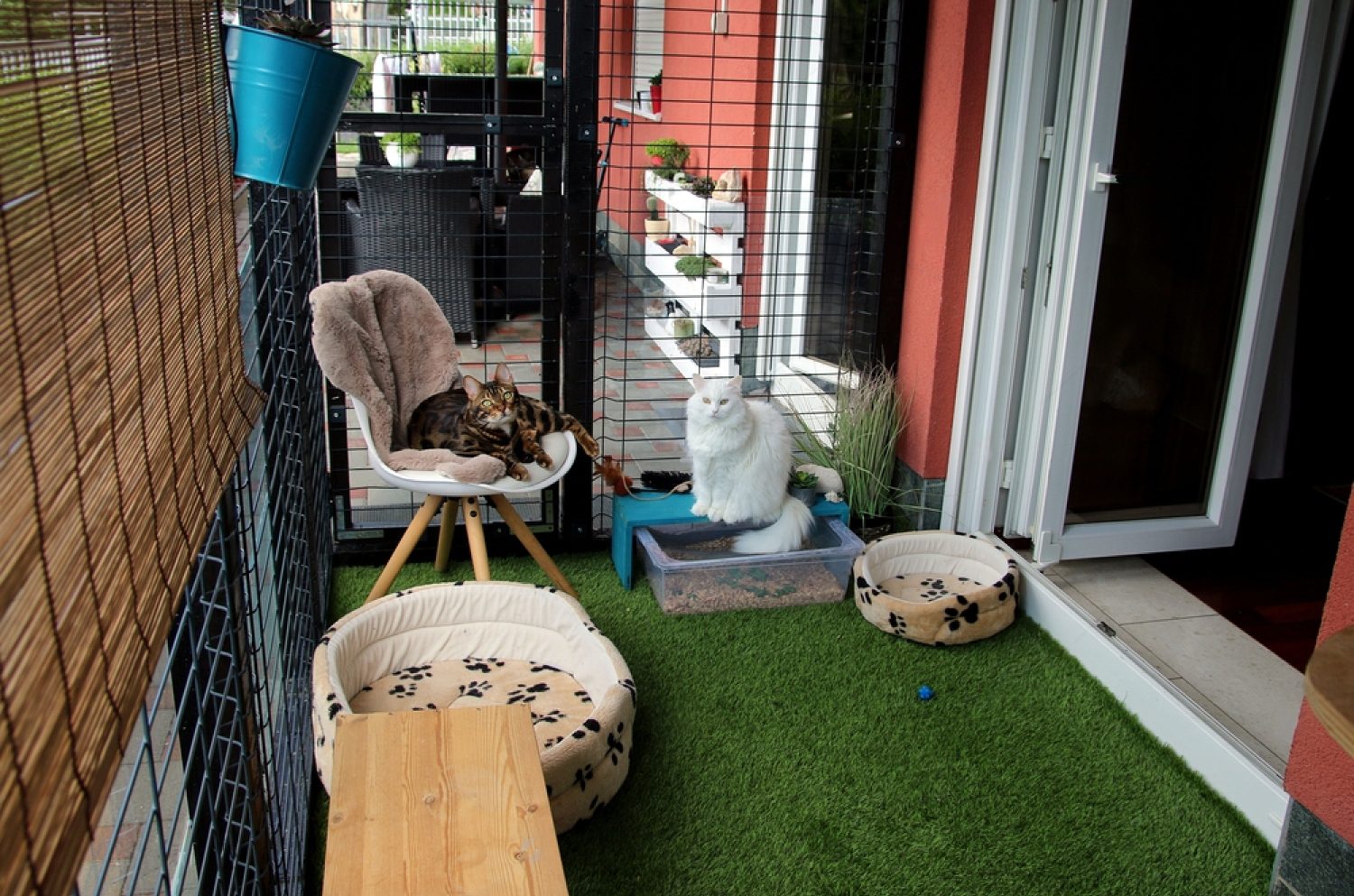All about Walking Cat Outside

As a seasoned veterinarian with a deep understanding of feline behavior, I find the comparison between domestic cats and their majestic wild counterpart, the panther, fascinating. While domestic cats may not roam the vast wilderness like panthers, they share many instincts, especially when exploring the outdoors. This comprehensive article will explore the pros and cons of allowing your cat outdoor access, an important decision for many cat owners.
Advantages of Outdoor Access for Cats
Outdoor access can greatly benefit domestic cats in several ways:
- Mental Stimulation: The outdoors is a sensory-rich environment that provides mental stimulation crucial for a cat’s cognitive health. Activities like chasing leaves or birds can keep their minds active and engaged.
- Physical Exercise: Roaming outside offers vital physical exercise, helping to maintain a healthy weight and prevent obesity. Climbing trees, running, and jumping contribute to their overall fitness and agility.
- Natural Instincts: Being outdoors allows cats to engage in instinctual behaviors like hunting, which is essential for their psychological well-being.
- Reduced Boredom: Cats that have access to outdoor spaces are less likely to display behaviors associated with boredom or frustration, such as inappropriate scratching or over-grooming.
- Enhanced Well-being: Access to fresh air and natural light can improve their mood and overall health.

However, it’s important to note that the outdoor environment should be safe and secure. Cat-proof fencing, supervised outings, or a dedicated cat patio (catio) can provide safe outdoor experiences.
Disadvantages of Allowing Cats to Roam Freely
Despite the benefits, there are significant risks associated with outdoor access:
- Safety Risks: Traffic, predators, and the possibility of getting lost or stolen are major concerns. Cats may also encounter other territorial animals.
- Health Hazards: Exposure to parasites, diseases, and toxins found in plants or chemicals is higher outdoors. Regular health check-ups and vaccinations become even more crucial.
- Environmental Impact: Cats are natural hunters and can impact local wildlife, particularly bird populations.
- Unpredictable Behavior: Outdoor cats might develop habits such as wandering far from home, which can be worrisome for owners.
Key Considerations for Outdoor Cat Life
When deciding whether to allow your cat outdoor access, consider the following:
Is Your Location Safe for Outdoor Cats?
Evaluate the safety of your immediate environment. Is your neighborhood busy with traffic? Are there known predators in the area? Cats living in busy urban areas or near major roads face greater risks than those in quieter, suburban, or rural areas.

Health Status of Your Cat
Consider your cat's health and age. Young, agile cats may navigate outdoor challenges better than older or health-compromised cats. Outdoor access may need to be limited or supervised for cats with chronic health conditions.
Regular flea and tick control, as well as vaccinations, are crucial for outdoor cats. Discuss with your veterinarian the best healthcare regime for your outdoor cat.
Neutering and Microchipping: Essential for Outdoor Cats
Neutering reduces the risk of unwanted litters and can decrease roaming tendencies in cats. Microchipping is a safe way to ensure your cat can be identified and returned to you if they get lost. It's a simple, quick procedure that can offer peace of mind.
A collar with an ID tag is also recommended, but ensure it’s a safety collar that breaks away if caught.
Indoor vs. Outdoor: Making the Right Choice
Before deciding on outdoor access for your cat, consider their personality, health, and your living environment. Some cats may prefer the safety and comfort of the indoors, while others may thrive with outdoor access.
If you decide against outdoor access, ensure that your home environment is enriched with cat trees, scratching posts, and toys to stimulate your cat’s natural behaviors.
Indoor-Only Living for Cats
Indoor living doesn't have to be boring for cats. Enrich their environment with various types of toys, scratching posts, and perches. Regular interactive play sessions can help satisfy their predatory instincts. If possible, provide access to secured outdoor spaces like balconies or patios.
Remember, each cat is unique, and what works for one may not work for another. The decision to allow outdoor access should be based on a careful assessment of the risks and benefits, tailored to your cat's needs and your specific living situation.
— In this article, we've explored the various aspects of allowing domestic cats outdoor access, comparing their needs and instincts with those of wild panthers, and provided insights for owners to make informed decisions about their feline friends' lifestyle.
❓Can domestic cats walk outside without a leash and collar?
✅Yes, but it is safer to let a cat outside on a leash and with a chip. Collars are not desirable.
❓How is it safe to let a cat outside?
✅You need to make sure that the cat has enough skills to survive outside, has no medical problems, and knows its home address. You also need to let the cat outside at a safe time of day when there is no heavy traffic or danger.
❓How often should I let my cat outside?
✅The number of walks outside depends on the individual cat’s needs, age and health. On average, it is enough for cats to go outside a couple of times a week, but some cats may need more frequent walks.
❓How do you convince a cat to come home after a walk outside?
✅You can train the cat to come back at the sound or whistle signal. Or track it by its chip.
❓What to do if the cat doesn’t come home after a walk outside?
✅It is important to first check the surroundings of the house and try calling the cat by name or whistle. If the cat doesn’t show up within a few hours, it’s worth spreading the word on social media and contacting local animal shelters. We recommend using a tracking chip.




Thank you very much for the great article! keep it up